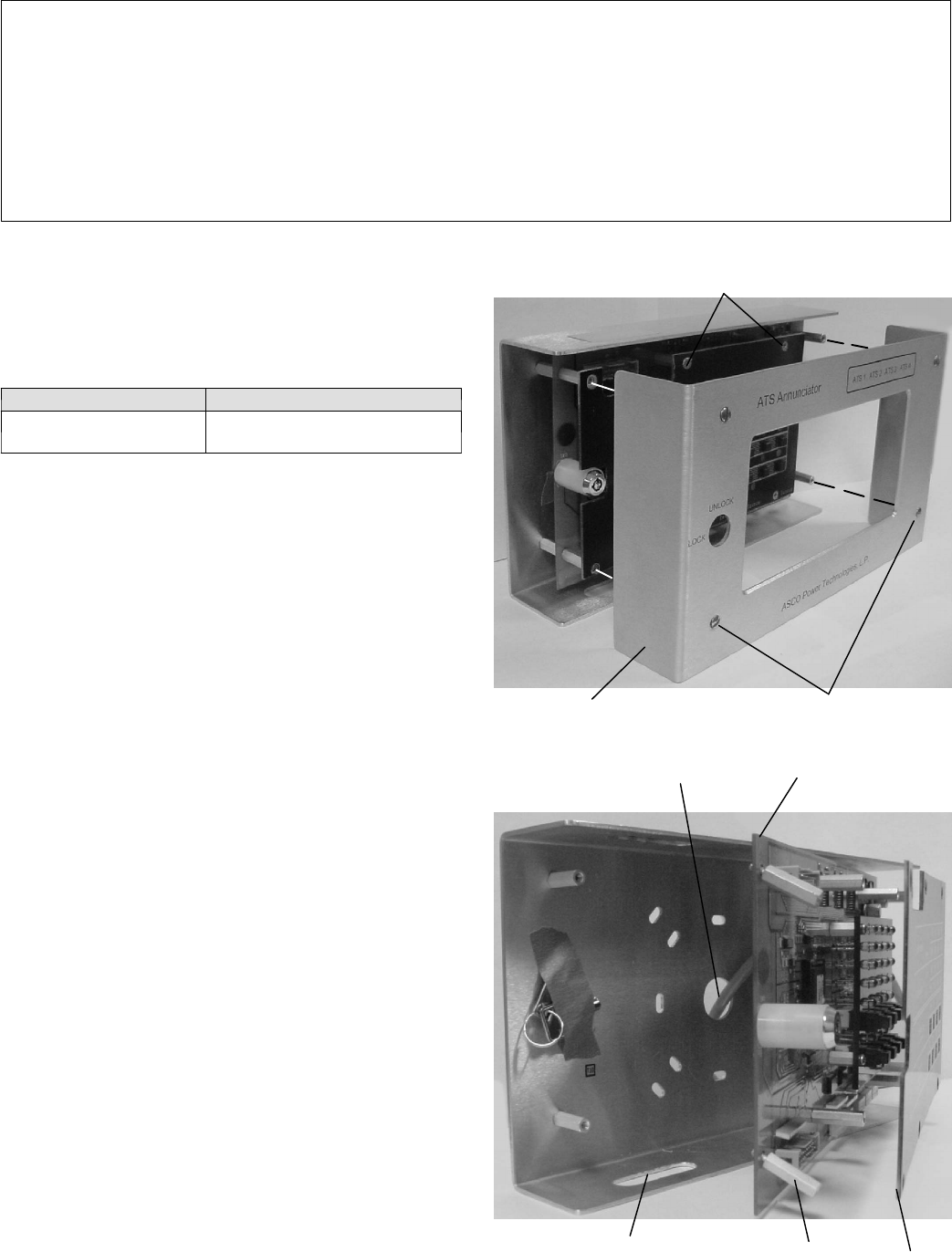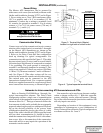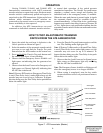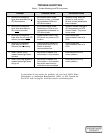
1
Serial Communications
Serialcommunications permits large amounts ofinformationto be p rocessed over afew wires.In theserial communications systems usedby ASCO,each
individual device in the system --- automatic transfer switch, bypass-isolation switch, ATS annunciator, etc. --- has a unique code, or address, thatis
assigned t o it through DIP switches in the devices. According to the established A SCO serial communications rules, or protocol, each ATS annunciator
and/or the network supervisor on the communication link “talks” to all automatic transfer switches and other elements being monitored on the link at
the same time. They all “hear” what is being said, but only the device that is addressed responds.
Sending and receiving requests and commands is done over the same pair of twisted wires linkedin a network fashion from onedevice toanother to form
the communication link, or highway. This physical configuration comprises a network in which only the addressed device is permitted to go on line and
respond to an inquiry. With this serial communications system, a minimum number of wires can be used to link the elements together. Without serial
communications,itwouldtakeconsiderablymorewirestoaccomplishthesamething.
INSTALLATION
The ATS Annunciator has been tested and is ready to use.
Installation simply requires mounting, connecting p ower
and communication wiring, and setting DIP switches. When
unpacking the unit, locate the loose parts which are supplied
in a separate kit. The kits contain the following parts:
Master Kit 401091 Slave Kit 401092
label holder labels
& 2 resistors
label holder labels,
2 resistors, & ribbon cable
The Master ATS Annunciator can be readily identified by
the front mounted key switch (to prevent unauthorized
operation). You will find the ke y taped inside the back
panel. Up to two Slave ATS Annunciators can be mounted
directly above or below the Master. All three ATS Annun-
ciators are then interconnected by means of ribbon cables.
All external wiring for power and serial communication line
connects to the Master ATS Annunciator. Observe the
requirements of the National Electrical Code (especially
Articles 725 and 800) and any local codes when interwiring.
Mounting
An Outline and Installation drawing (JS 387797) is included
in the back of this manual. The two---part enclosure, which
measures 10I wide x 6I high and 2I deep, is designed for
mounting to the standard wall boxes listed on the drawing.
After removing the front cover the hinged circuit board
opens to t he right to expose the mounting holes in the base.
Loosen four screws to remove the c over as shown in Figure 1.
Remove four scr ew s and rem ove the face pl ate. Then remo ve
the two left standoff s and swing the hinged c ircuit board to the
rig h t as show n in Fig ur e 2. You wil l find the key taped to the
back panel. Ru n the power wires (and insulated ground wire)
and c om mun ication c ab l e ( tw isted pair s) throug h the c en ter
hol e in th e back of th e encl osu r e, then to the right throug h the
notch in the circuit board. A ttach the ATS A nnunciator to the
wall box by using the mounting holes that line up. Swing the
circ u it board closed again. Reinstall the tw o standoffs and
tighten them sec urel y. R eins tal l the face plate with four sc r ews .
Connecting Slave ATS Annunciators
Connect the Slave ATS Annunciator(s), when used, to the
Master. R emove the adhesive labels from the slotted
openings as shown in Figure 2.
Then run the ribbon cable between ATS Annunciators and
plug each end into the adjacent sockets. Two Slaves may be
connected to one Master either by above and below
arrangement or two below arrangement. See the Outline
and Installation drawing for details.
face plate screws
cover cover screws
Figure 1. Cover removal.
slotted opening for ribbon
cable and removable label
power wires, insulated ground wire,
and communication cable
hinged circuit board
face plate
standoff
Figure 2. Hinged circuit board (Master).










